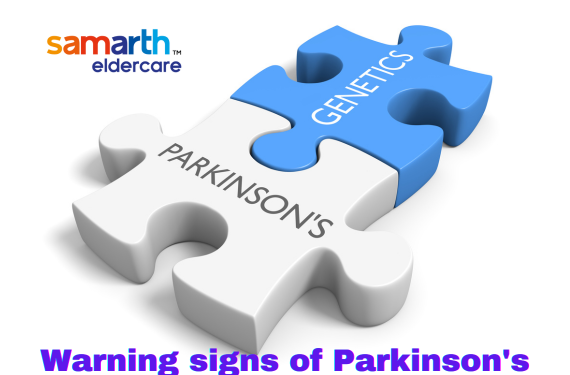As with many other diseases, even Parkinson’s disease presents some symptoms early on. These are not so noticeable or commonly associated with this disease. Hence, people are likely to ignore them. For example, even though tremors are a known symptom, they may not be so prominent initially and occur only on a finger. You may experience it in your jaw or one hand. Also, it is not so apparent if you keep doing something. Also, women are more likely to experience this symptom than men. Only resting tremors occurring when your limbs are idle are noticeable, and they go away if you perform any tasks.
Known symptoms
Early known motor symptoms of Parkinson’s disease that appear are slowed movements, balance issues, stiffness or rigidity in muscles, etc. Sometimes, these can affect simple activities such as blinking, smiling, or swinging the arms while walking. Speech and writing changes could also be initial symptoms of Parkinson’s disease. The symptoms may occur on one side of the body initially, and later, you may experience the same on the other side. However, the side where the symptoms appeared first may continue to feel them more prominently than the other side.

Join Now >
Parkinson’s disease can present non-motor symptoms such as:
- Restless leg syndrome
- Fatigue
- Low blood pressure
- Pain
- Skin issues
- Dizziness
- Sweating
- Trouble eating, swallowing
- Voice and speed issues
- Dental issues
However, here are five lesser-known early signs that you must not ignore. These are clues that indicate the onset of Parkinson’s disease. Your doctor may be able to conduct appropriate tests and establish the presence of the disease.
- Loss of smell
In the present scenario, we associate loss of smell mostly with Covid-19. However, this symptom is a lesser-known early sign of Parkinson’s disease. The loss of smell appears years before motor symptoms like tremors appear in 90% of the patients, so it is one of the earliest signs. Hence, seniors should not ignore the persistent loss of smell and must go for a check-up to determine the cause.
- Anxiety or depression
Mood changes can occur in Parkinson’s patients up to 10 years before other symptoms appear and the disease gets diagnosed. So, this is another of the earliest signs of Parkinson’s that one must not ignore. Women are more likely to have these symptoms than men. The cause of this symptom is the changes this disease brings about in the chemicals in the brain. If you consistently feel anxious or depressed, you must seek medical help for a proper check-up and diagnosis.
- Constipation
A tough one, this! Many seniors struggle with constipation. This issue has been depicted so hilariously and realistically in the hugely popular movie Piku, enacted by Amitabh Bachchan. Bowel issues may appear in Parkinson’s patients 20 years before they may be diagnosed with the disease! While there could be many reasons for constipation, it is best to visit a doctor if it occurs consistently. As the disease progresses, people begin to experience bladder issues too.
- Vision issues
Vision issues such as taking longer to read, having double vision, or having trouble moving from one line to the next, etc., could be due to Parkinson’s disease. This disease can affect eye movements and cause eye issues like dry eyes, blinking too often or too little, colour blindness, etc. Hence, seniors should not ignore vision issues like trouble with reading.
- Showing fewer expressions
Facial masking or showing fewer expressions than earlier is another sign of Parkinson’s disease. Even though you may feel the emotions, you may not be able to display them on your face and may have a blank face. You may also be smiling lesser. While people may get annoyed and wonder what is wrong, the underlying reason could be Parkinson’s disease. Hence, people should take notice of such facial expression changes in the near and dear ones and consider the possibilities and get a check-up done.
Even sleep disorders are an early sign of Parkinson’s disease, and this can deteriorate as the disease progresses. Later on, people may have vivid dreams and even hallucinations. None of these symptoms are conclusive of the presence of the disease.





